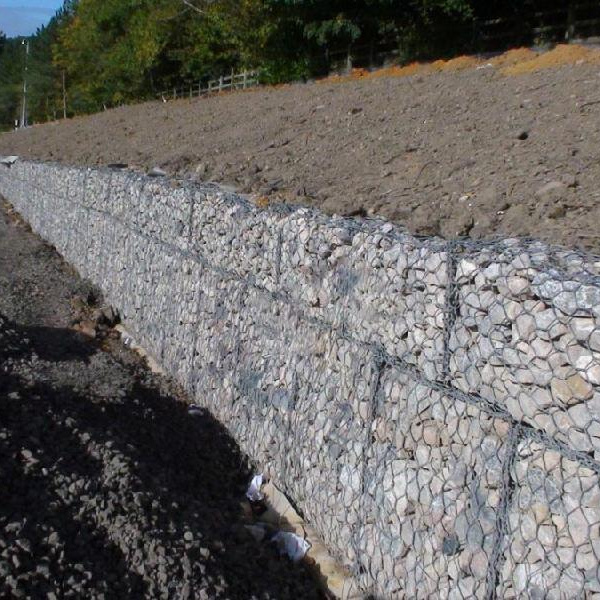Kas . 29, 2024 15:07 Back to list
Suppliers of Gabion Retaining Walls for Sloped Landscape Solutions
Exploring Gabion Retaining Walls on Slopes Suppliers and Solutions
In the realm of modern landscaping and civil engineering, gabion retaining walls have gained immense popularity as a reliable and aesthetically pleasing solution for managing slopes and preventing soil erosion. These walls, constructed from mesh cages filled with rocks, stones, or other materials, offer durability and flexibility, making them ideal for various applications. As the demand for such structures increases, numerous suppliers have emerged, each offering innovative solutions to cater to diverse project needs.
What are Gabion Retaining Walls?
Gabion walls consist of large wire mesh baskets filled with localized materials such as stone, concrete, or recycled materials. This construction method not only provides exceptional strength and stability but also allows for natural drainage, preventing water buildup behind the wall. The porous nature of gabions means they can adapt to the natural movement of the soil and accommodate changes in moisture levels, making them particularly effective for steep slopes.
Advantages of Gabion Retaining Walls
1. Erosion Control One of the primary benefits of gabion walls is their capacity to minimize soil erosion. Their design allows for water to flow through, reducing hydrostatic pressure and preventing the washing away of soil.
2. Environmental Compatibility Gabion walls can blend seamlessly with the surrounding environment. By using natural stone and local materials, they can enhance the landscape's aesthetic while promoting biodiversity.
3. Cost-Effectiveness When compared to traditional retaining wall systems, gabion walls can be more economical. The materials required for filling can often be sourced locally, reducing transportation costs and environmental impact.
4. Easy Installation Gabion walls are relatively straightforward to install, requiring minimal heavy machinery. This factor is especially advantageous in remote or sensitive areas where access may be limited.
5. Durability The robust materials used in gabion wall construction ensure longevity. These retaining walls can withstand harsh weather conditions, including heavy rains and frost, making them an excellent choice for various climates.
gabion retaining wall on slope suppliers

Choosing the Right Supplier
When considering the implementation of gabion retaining walls, selecting the right supplier is crucial. Here are some factors to keep in mind
1. Experience and Reputation Look for suppliers with a proven track record in providing gabion solutions. Reviews, testimonials, and case studies can be insightful in gauging their expertise and reliability.
2. Material Quality The quality of materials used in gabion construction is paramount. Ensure your supplier provides high-grade wire mesh and durable filling materials to enhance the longevity and stability of your wall.
3. Customization Options Depending on the specific needs of your project, you may require tailored solutions. A good supplier should offer various mesh sizes, filling materials, and sizes for the gabions to suit your design requirements.
4. Sustainability Practices As environmental concerns continue to rise, it's essential to choose suppliers committed to sustainable practices. Inquire about the sourcing of their materials and their efforts to minimize the ecological impact of their operations.
5. Technical Support The complexity of engineering a retaining wall may necessitate expert guidance. Reliable suppliers often provide consultations, design support, and installation assistance to ensure your project is successful.
Conclusion
Gabion retaining walls present a versatile solution for slope management, combining functionality with aesthetic appeal. With numerous suppliers available in the market, stakeholders can find the right partner to meet their project requirements effectively. By focusing on quality, sustainability, and expertise, you can enhance the resilience of your landscape while addressing erosion challenges with confidence. As the trend continues to grow, gabion walls not only serve practical purposes but also contribute to sustainable and visually pleasing environments.
-
Visualizing Gabion 3D Integration in Urban Landscapes with Rendering
NewsJul.23,2025
-
The Design and Sustainability of Gabion Wire Mesh Panels
NewsJul.23,2025
-
The Acoustic Performance of Gabion Sound Barriers in Urban Environments
NewsJul.23,2025
-
Mastering the Installation of Galvanized Gabion Structures
NewsJul.23,2025
-
Gabion Boxes: Pioneering Sustainable Infrastructure Across the Globe
NewsJul.23,2025
-
Custom PVC Coated Gabion Boxes for Aesthetic Excellence
NewsJul.23,2025
-
Installation Tips for Gabion Wire Baskets in Erosion Control Projects
NewsJul.21,2025






